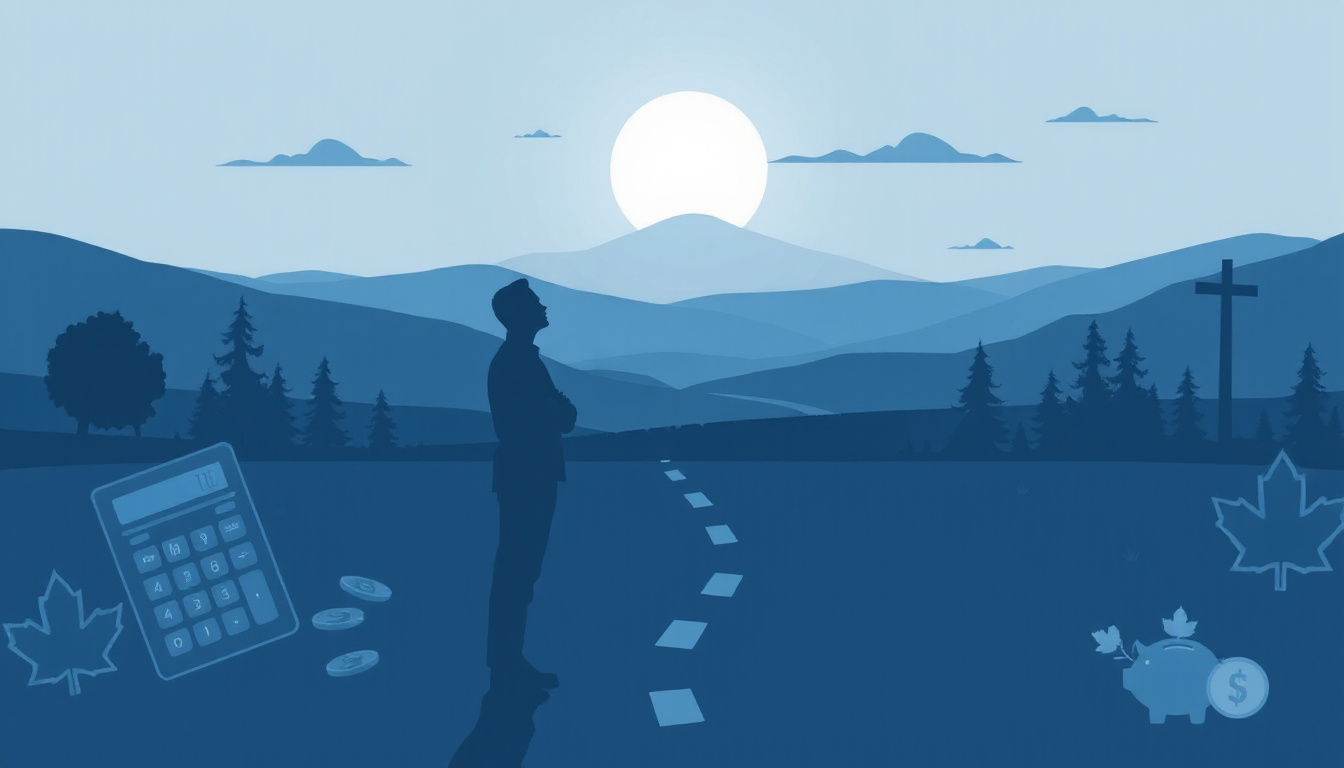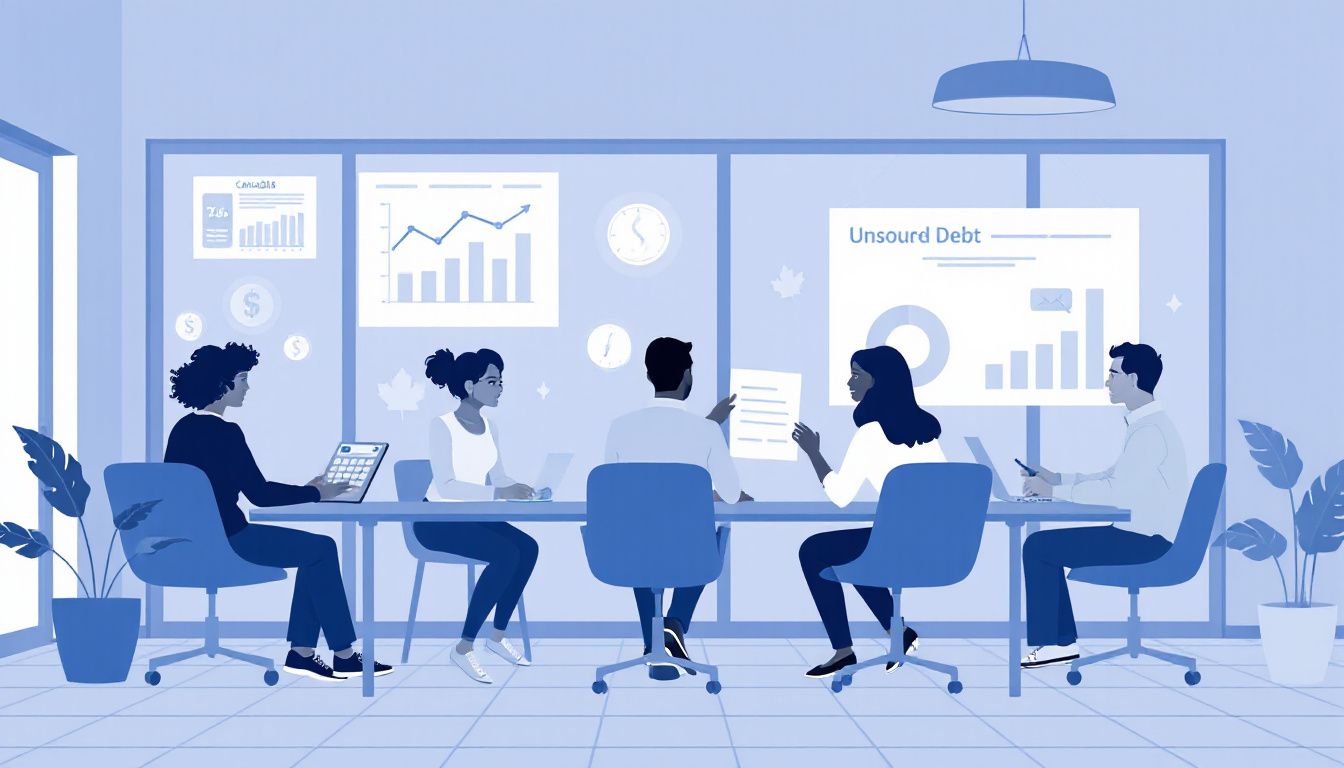Unsecured debt in Canada has reached alarming levels, with approximately 40% of Canadians currently holding such debt in
2023. This figure is indicative of a widespread financial challenge affecting households across the nation. Unsecured debt refers to loans that are not backed by collateral, such as credit card debt, personal loans, and student loans. Understanding the nuances of unsecured debt is crucial for Canadians looking to take control of their financial situations. In this comprehensive guide, we will explore what constitutes unsecured debt in Canada, common types of unsecured debt, effective strategies for managing it, and various solutions available for debt relief. Armed with these insights, readers can make informed financial decisions and seek appropriate support as needed.

Key Takeaways
- Unsecured debt in Canada includes credit card debt, personal loans, and medical bills that are not backed by collateral.
- Recognizing the common types of unsecured debt is crucial for effective financial planning and management.
- Implementing strategies like budgeting, debt consolidation, and negotiation can significantly alleviate unsecured debt stress.
- Various solutions, including credit counseling and consumer proposals, are available for Canadians facing unsecured debt challenges.
- Understanding your rights and options in dealing with unsecured debt is essential for achieving financial stability.
What is Unsecured Debt in Canada?
Unsecured debt in Canada refers to borrowed money that is not backed by any collateral, meaning that lenders cannot claim any assets if the borrower defaults on the loan. As of 2023, approximately 27% of Canadian households reported carrying unsecured debt, including credit card balances, personal loans, and lines of credit (Source: Statistics Canada). This type of debt is often characterized by higher interest rates compared to secured debt because it poses a greater risk to lenders without collateral backing. Unsecured debt can lead to significant financial stress; therefore, it’s essential for Canadians to manage these debts effectively to avoid slipping into further financial difficulty.
Common Types of Unsecured Debt
As of 2023, approximately 53% of Canadians hold some form of unsecured debt, showcasing a critical aspect of consumer financial health in the country. Unsecured debt in Canada primarily includes credit card debt, personal loans, and lines of credit, which many Canadians rely on for day-to-day expenses and emergencies. According to the Canadian Bankers Association, the average Canadian household with debt has about $21,000 in unsecured debt, a figure that underscores the increasing reliance on non-collateralized borrowing. This type of debt poses significant risks as it typically comes with higher interest rates compared to secured loans, making it crucial for individuals to manage it effectively to avoid falling into a debt spiral.
‘Debt is like any other trap, easy enough to get into, but hard enough to get out of.’ – Henry Wheeler Shaw

Strategies for Managing Unsecured Debt
Unsecured debt in Canada is a growing concern, with approximately 27% of Canadian households holding some form of this type of debt in
2023. This statistic highlights the prevalence of unsecured debts, such as credit card balances and personal loans, which often have higher interest rates compared to secured loans. A study by the Canadian Bankers Association reveals that nearly 47% of Canadians actively seek strategies to manage their unsecured debt. Common tactics include budgeting, consolidating loans, and seeking financial counseling, which can effectively alleviate financial stress. With rising cost of living and inflationary pressures, understanding and managing unsecured debt remains critical for Canadians aiming to maintain financial health.
Solutions for Unsecured Debt Relief in Canada
In Canada, approximately 57% of adults report having some form of unsecured debt, which includes credit card balances, personal loans, and lines of credit. This statistic underscores the widespread financial challenge that Canadians face in managing their debt. According to a recent survey by Equifax, the total consumer debt in Canada, excluding mortgages, reached a staggering CAD
2.1 trillion in 2023, highlighting the concern surrounding unsecured debt in Canada. With the rising cost of living and interest rate hikes, finding effective solutions for managing and relieving this kind of debt has become more essential than ever. Options such as debt consolidation, credit counselling, and consumer proposals offer pathways for individuals seeking relief and financial recovery. Understanding these solutions can provide Canadians with the tools needed to combat their unsecured debt effectively.
